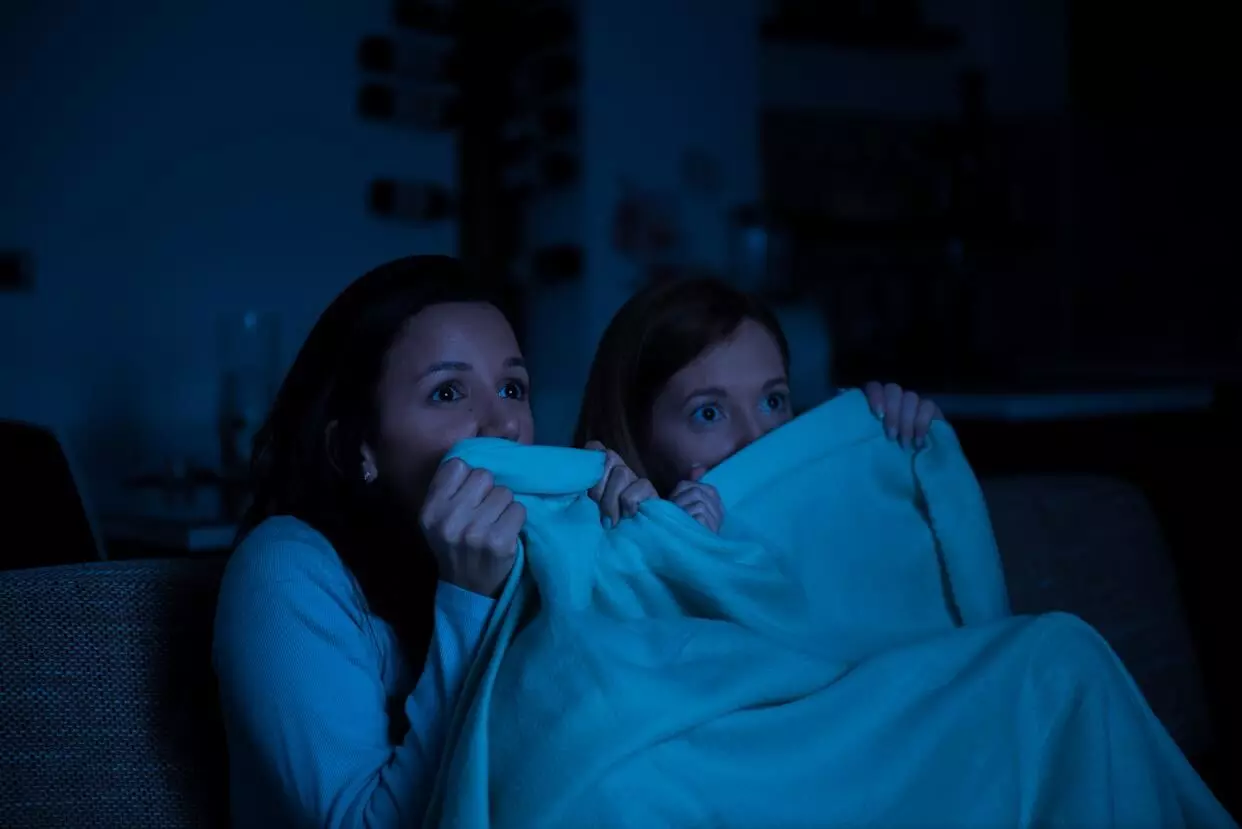Why humans love to be scared: The psychology behind Halloween’s thrill of ‘controlled fear’
From flickering candles in Hyderabad’s Halloween bars to children knocking on gated doors dressed as witches, fear has become a shared language of release
By - Anoushka Caroline Williams |
Representational Image
Hyderabad: Every Halloween, millions willingly invite fear into their lives, paying to be chased by monsters, sitting through films that make their hearts race or walking through haunted houses knowing full well something will jump out.
In India too, Halloween has grown beyond imported novelty; it’s now a weekend of parties, spooky décor, and even “horror pop-ups” in Hyderabad, Bengaluru and Mumbai. But what makes humans, wired for self-preservation, deliberately flirt with fear?
Psychologists call it controlled fear, the experience of danger in a safe setting. It offers an emotional workout, testing the body’s alarm systems while assuring the mind it’s still in control. Fear, in this context, becomes more than a reaction; it becomes a reflection.
The science behind a scare
When you encounter a threat, real or imagined, your amygdala fires, triggering a surge of adrenaline and cortisol. Heart rate rises, muscles tense and focus narrows. But when your brain realises you’re safe, that it’s a movie, not a murderer, a flood of dopamine and endorphins follows, producing relief and even euphoria.
“Fear activates survival responses, but when it ends safely, the brain interprets it as mastery,” says Dr Asmita Narang, clinical psychologist, speaking to NewsMeter. “That’s why people often laugh after screaming. It’s a physical release.”
This biochemical loop, terror, relief, reward, is why horror films, thrill rides, and escape rooms work. They create a short burst of chaos, followed by a sense of control restored.
The chemistry of fear
• Adrenaline – heightens alertness and physical readiness
• Cortisol – the stress hormone that fuels energy during threat
• Dopamine – released when the threat ends, creating pleasure and motivation
• Endorphins – natural painkillers that calm the system after fear
Together, they explain why fear can feel addictive; it’s a physiological rollercoaster that ends in relief.
Fear as emotional rehearsal
Modern research suggests that engaging with fear in safe settings acts like mental training for real-life crises.
“Watching horror or playing survival games gives people exposure to anxiety triggers without real consequences,” explains Dr Soham Murthy, behavioural scientist. “It strengthens emotional regulation. During the pandemic, people who consumed darker media coped better with uncertainty; they’d already simulated crisis emotions through fiction.”
This idea, known as emotional rehearsal, frames fear as a resilience practice. By surviving imaginary danger, humans reinforce the belief that they can survive real ones too.
Why we keep coming back
• Fear provides contrast in monotonous routines.
• The “safe scare” helps release stored anxiety.
• Horror stories allow exploration of taboo emotions, anger, guilt, and death in a controlled form.
• Shared fear builds social bonding.
The social side of terror
Fear is rarely faced alone. From childhood sleepovers to crowded horror screenings, collective fear builds camaraderie.
“Shared fear breaks barriers,” says Dr Narang. “When people scream together and then laugh together, they’ve experienced vulnerability and recovery as a group.”
This social chemistry powers the success of Halloween nights, haunted house experiences, and even scary movie marathons. Being frightened in a crowd feels safer, and paradoxically, more fun.
The Indian Halloween: From imitation to adaptation
Halloween’s steady growth in India’s metros reflects urban curiosity rather than Western imitation. Cafés, clubs, and brands have found in it a new canvas for expression, costumes inspired by Indian folklore, Bollywood horror tributes, or ghostly characters from local myths.
Sociologist Dr Sameera Das notes, “Halloween’s appeal lies in its control. It lets urban Indians flirt with fear without superstition. It’s fear rebranded as play.”
From “Bhoot Brunches” in Hyderabad to “Desi Zombie Walks” in Bengaluru, the trend shows how Indian cities are reshaping horror into performance, half thrill, half therapy.
The Indian horror economy
• Streaming Boom – OTT platforms have revived the horror genre (Tumbbad, Bhoot Police, Adhura).
• Experiential Events – Haunted tours and VR fear games are growing in metros.
• Retail – Seasonal Halloween décor, costumes, and themed desserts form a mini industry worth several crores annually.
• Music & Clubs – October-end “spooky nights” are now fixtures on nightlife calendars.
Fear as reflection
Fear, stripped of danger, becomes a form of meaning-making. It tells us what we value and what we repress. Ghosts in stories often symbolise guilt, loss, or injustice, echoes of the living rather than threats of the dead.
As cultural critic Arvind Rao observes, “Our fears mirror our times. When the world feels uncertain, horror thrives — not because we love terror, but because it gives shape to invisible anxieties.”
In that sense, Halloween’s rise in India isn’t just about parties and costumes. It’s a collective ritual, a chance to confront chaos, laugh at it, and move on.
“Fear isn’t the opposite of pleasure,” says Dr Narang. “It’s the proof that you’re alive enough to feel both.”
How haunted houses work
1. Unpredictability — Jump scares trigger primitive alarm systems.
2. Controlled Chaos — Clear exits ensure participants always know it’s not real.
3. Social Amplification — Group fear heightens response.
4. Relief Cycle — Adrenaline followed by laughter reinforces enjoyment.
Conclusion
To be scared is to momentarily lose control and then to reclaim it.
From flickering candles in Hyderabad’s Halloween bars to children knocking on gated doors dressed as witches, fear has become a shared language of release.
It’s not darkness people seek, but the thrill of emerging from it.
Because, as every good horror story reminds us, surviving the fear is the sweetest part of the fright.